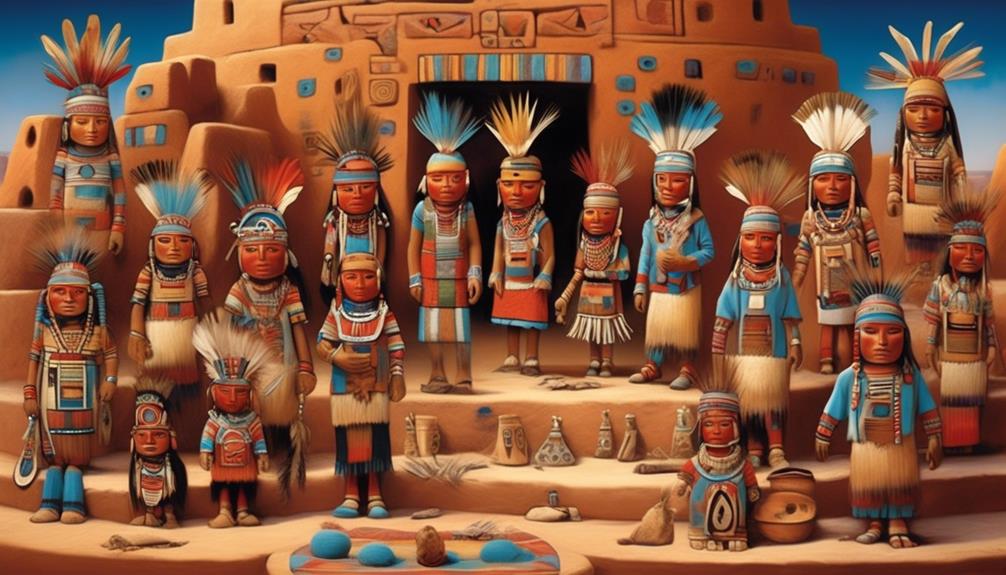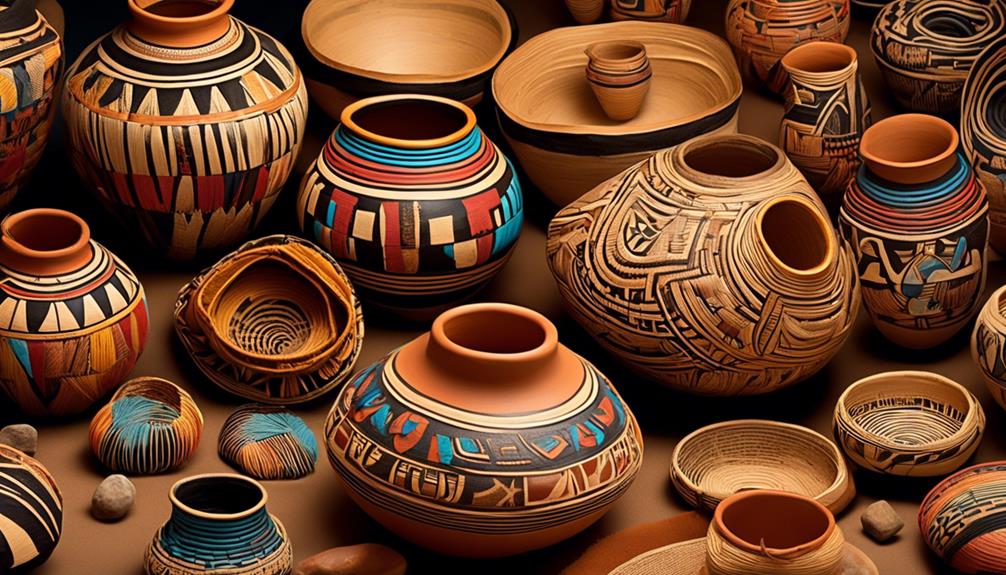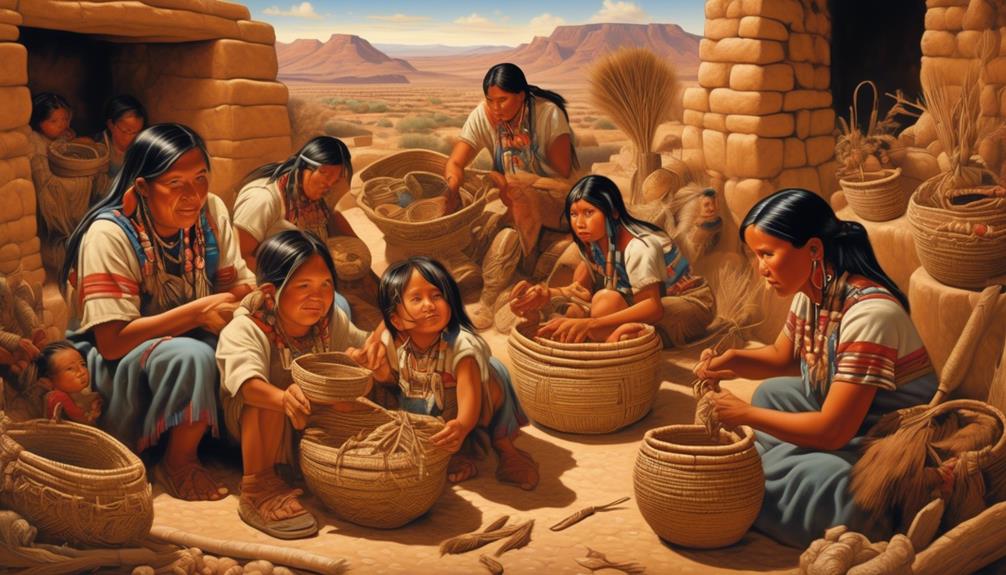Have you ever wondered how the Hopi tribe thrived in the challenging environment of the American Southwest?
The Hopi people have not only survived but also flourished for centuries in the arid desert landscape. Their ability to adapt to the harsh conditions of their surroundings is a testament to their ingenuity and resilience.
By exploring their geographic adaptations, agricultural techniques, water management, seasonal knowledge, and spiritual connection with the land, we can gain valuable insights into the ways in which the Hopi tribe has thrived in their environment.
Key Takeaways
- The Hopi Tribe developed hunting strategies, shelter construction techniques, and clothing materials that were specifically adapted to the arid and rugged terrain of their environment.
- They practiced terrace farming and crop rotation to capture and retain rainfall, ensuring soil fertility and sustainable agriculture.
- The Hopi Tribe had sophisticated irrigation systems, terraced fields, and small dams and reservoirs for water management, reflecting their commitment to water conservation and sustainability.
- The Hopi Tribe had a deep understanding of natural rhythms and cycles, using seasonal knowledge to determine the optimal times for planting and harvesting. They also aligned their social and ceremonial activities with seasonal transitions, symbolizing their interconnectedness with the environment. They passed down their traditional ecological knowledge through spiritual practices, rituals, and community gatherings, instilling respect for the environment.
Geographic Adaptations
Adapting to the diverse and challenging landscapes of the American Southwest, the Hopi Tribe has developed a range of geographic adaptations that reflect their deep understanding of the environment.
The tribe's hunting strategies are tailored to the arid, rugged terrain, utilizing knowledge of animal behavior and migration patterns.
Shelter construction is ingeniously designed to withstand the extreme temperatures and scarce water sources. The Hopi people use locally available materials such as adobe and stone to build multi-story dwellings, known as 'pueblos,' which provide insulation during the cold desert nights and offer protection from the scorching sun during the day.
Clothing materials are carefully selected to suit the climatic conditions, with garments being made from cotton and animal hides.
The Hopi also employ ingenious food preservation techniques, such as sun-drying and smoking, to ensure a stable food supply during harsh weather conditions and scarcity.
These geographic adaptations reflect the Hopi Tribe's deep connection to the land and their ability to thrive in an environment that presents numerous challenges.
Agricultural Techniques
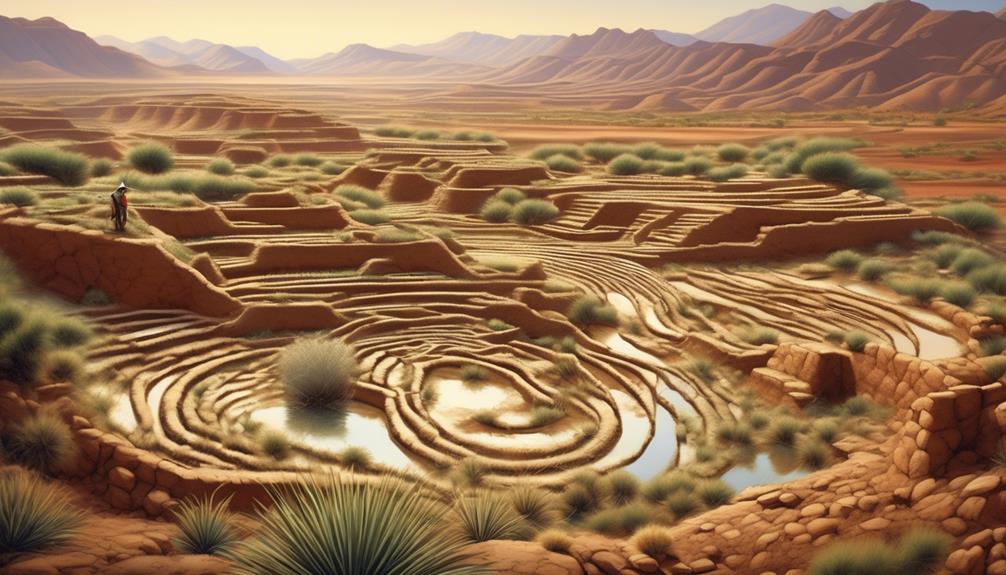
The Hopi Tribe's deep understanding of the environment extends to their agricultural techniques, which are intricately tailored to the unique conditions of the American Southwest. This mastery of agricultural practices is essential for their survival in a challenging landscape.
- Terrace Farming: The Hopi people ingeniously adapted to the arid environment by constructing intricate terraces on the slopes of the mesas. These terraces helped capture and retain the little rainfall that the region receives, allowing for the cultivation of corn, beans, and squash.
- *Our ancestors' wisdom*: The intricate terraces not only prevented soil erosion but also maximized the use of limited water resources, showcasing the Hopi's deep understanding of sustainable agriculture.
- Crop Rotation: The Hopi Tribe practiced crop rotation long before it became a mainstream agricultural practice. They understood the importance of maintaining soil fertility and preventing the depletion of nutrients. By rotating their crops, they ensured that the soil remained rich and fertile, enabling sustainable agriculture for generations.
These innovative agricultural techniques not only sustained the Hopi Tribe for centuries but also serve as a testament to their profound understanding and harmonious relationship with the environment.
Water Management
The Hopi Tribe's intricate water management system reflects their profound understanding of the environment and the critical role of water in sustaining their agricultural practices and community livelihood. The Hopi people have developed sophisticated irrigation systems that efficiently distribute water across their arid landscape. They've ingeniously designed terraced fields to capture and retain rainwater, allowing it to slowly percolate into the soil and reducing runoff. Furthermore, the Hopi have implemented a system of water conservation that involves the construction of small dams and reservoirs to store water for times of scarcity. By carefully monitoring and controlling the flow of water, the tribe ensures that every drop is utilized effectively.
The Hopi's water management practices aren't only practical but also deeply rooted in their cultural and spiritual beliefs. Water is revered as a sacred resource, and the tribe's conservation efforts are intertwined with their traditions and ceremonies. This holistic approach to water management demonstrates the Hopi's harmonious relationship with the environment and their commitment to sustainability. The tribe's enduring ability to adapt to their environment and thrive in a challenging landscape is a testament to the wisdom of their water management practices.
Seasonal Knowledge
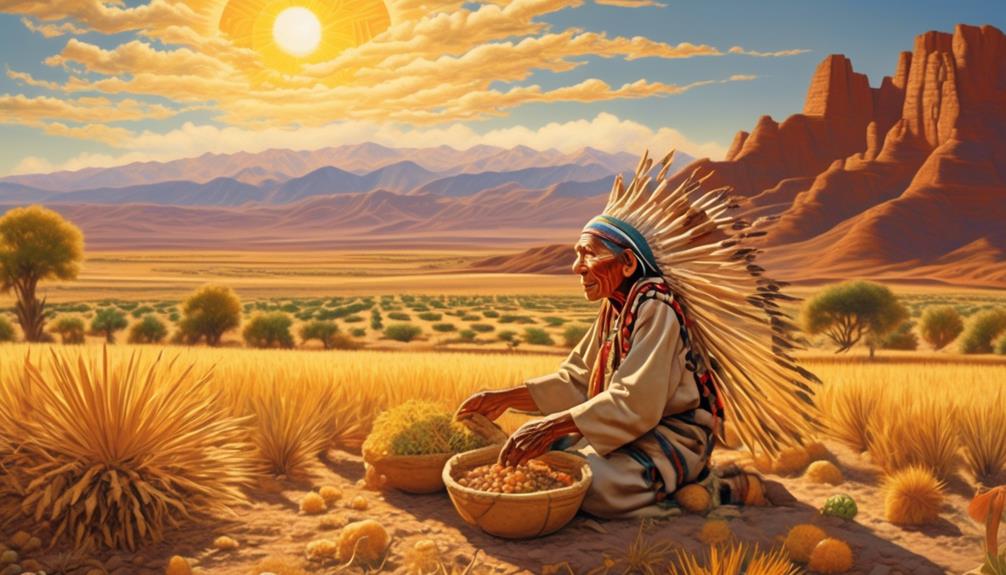
Drawing on generations of accumulated wisdom, the Hopi Tribe's seasonal knowledge incorporates a deep understanding of the natural rhythms and cycles that govern their agricultural practices and community life. This traditional knowledge is crucial for maintaining ecological balance and ensuring the sustainability of their way of life.
- Agricultural Practices
The Hopi Tribe's seasonal knowledge guides them in determining the optimal times for planting and harvesting various crops. This knowledge is based on careful observations of environmental indicators such as the behavior of plants, animals, and celestial bodies. By aligning their agricultural activities with the natural cycles, the tribe maximizes the productivity of their crops while minimizing the impact on the environment.
- Community Life
Seasonal knowledge also influences the social and ceremonial activities of the Hopi Tribe. Traditional practices such as ceremonies, dances, and rituals are conducted in accordance with seasonal transitions, symbolizing the interconnectedness between the tribe and the environment. These ceremonies serve not only as a means of cultural preservation but also as a way to express gratitude and respect for the natural world.
The Hopi Tribe's seasonal knowledge exemplifies their deep connection to the land and their commitment to preserving ecological balance through their traditional practices.
Spiritual Connection
Nurturing a profound spiritual connection with the land, the Hopi Tribe's traditional practices and beliefs are deeply intertwined with the natural world, shaping their way of life and fostering a sense of reverence for the interconnectedness of all living things. Ritual practices play a central role in reinforcing this spiritual connection. Through ceremonies such as the Bean Dance and the Niman Kachina ceremony, the Hopi honor their relationship with the earth, seeking to maintain balance and harmony within the natural environment. These ritual practices serve as a means of expressing gratitude for the land's provisions and seeking blessings for future abundance.
Community gatherings are another vital aspect of the Hopi's spiritual connection to their environment. These gatherings, which often revolve around agricultural activities or ceremonial events, foster a sense of unity and shared responsibility for the well-being of the land. Through collective participation in rituals and communal activities, the tribe reinforces its spiritual bond with the natural world, emphasizing the interconnectedness of all life forms. These gatherings also provide a platform for passing down traditional ecological knowledge and instilling a deep respect for the environment in younger generations.
In essence, the Hopi's spiritual connection to the land isn't merely an individual belief but a communal ethos that shapes their interactions with the environment.
Frequently Asked Questions
How Did the Hopi Tribe's Geographic Adaptations Impact Their Social Structure and Political Organization?
The Hopi tribe's geographic adaptations profoundly impacted their social structure and political organization.
The environment influenced our community's cohesion, shaping our governance structure and political organization.
Our economic adaptations were closely tied to our environment, influencing our social dynamics and political decision-making.
The impact of these geographic adaptations on our community was significant, shaping our social cohesion and political governance structure.
What Are Some Traditional Medicinal Practices or Remedies Used by the Hopi Tribe Not Mentioned in the Article?
Traditional healing practices of the Hopi tribe involve the use of herbal remedies, passed down through generations. These remedies are rooted in the tribe's deep connection to nature and their understanding of the medicinal properties of local plants. Various herbs like sage, juniper, and tobacco are used for purification, healing, and ceremonial purposes.
The Hopi's traditional healing methods reflect their profound knowledge of the natural world and the importance of holistic well-being.
How Do the Hopi Tribe Incorporate Storytelling and Oral Traditions Into Their Agricultural Techniques?
Incorporating storytelling techniques, the Hopi Tribe infuses their agricultural innovations with rich oral traditions.
Through the art of storytelling, they pass down essential knowledge about farming practices, including planting, harvesting, and soil conservation.
These stories not only preserve their cultural heritage but also impart valuable agricultural wisdom, creating a seamless blend of tradition and innovation.
The narrative approach to agricultural techniques ensures that these practices are upheld and adapted for future generations.
What Specific Rituals or Ceremonies Are Performed by the Hopi Tribe to Honor and Protect Their Water Sources?
In the heart of Hopi tradition, ritual ceremonies are a vibrant and integral part of honoring and protecting our water sources. These sacred practices forge a deep spiritual connection to the land and water, serving as a powerful expression of our reverence for the natural world.
Through artistic expression and ancient rituals, we demonstrate our unwavering commitment to safeguarding the life-giving essence of water, ensuring its abundance for generations to come.
How Has the Spiritual Connection of the Hopi Tribe Influenced Their Artistic Expression and Craftsmanship?
Our spiritual connection greatly influences our artistic expression and craftsmanship. It's woven into our traditional practices, inspiring our pottery, kachina dolls, and intricate weaving.
Through our art, we honor our ancestors, preserve our culture, and express our deep reverence for the natural world. This connection is the heartbeat of our creativity, infusing each piece with meaning and purpose, keeping our traditions alive for future generations.
Conclusion
In conclusion, the Hopi tribe's deep connection to their environment has allowed them to thrive in the harsh conditions of the American Southwest.
Their geographic adaptations, agricultural techniques, water management, seasonal knowledge, and spiritual connection have enabled them to not only survive, but to flourish in their unique environment.
Through their resilience and resourcefulness, the Hopi have shown how a harmonious relationship with the land can lead to a sustainable and fulfilling way of life.
Mary is a passionate writer who brings creativity and a fresh perspective to our team. Her words have the power to captivate and inspire, making her an essential contributor to our content. Mary’s commitment to storytelling and dedication to promoting Indigenous culture ensures that her work touches the hearts of our readers. We’re fortunate to have her as part of our team.

